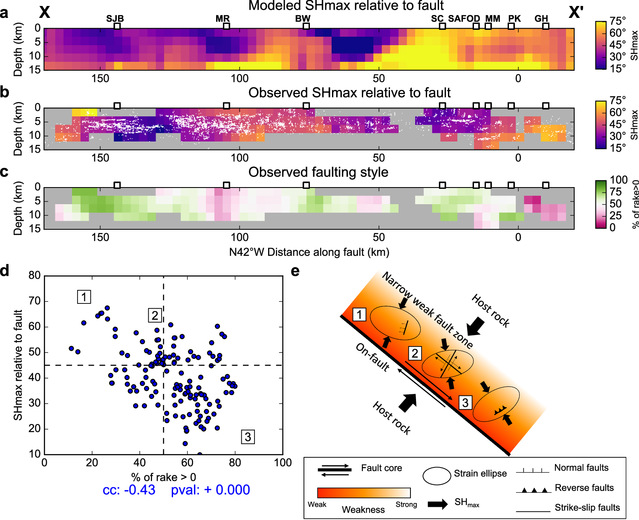Yifang Cheng,1,2,3,4* Roland Bürgmann,2,3 Richard M. Allen2,3
1 State Key Laboratory of Marine Geology, Tongji University, Shanghai, China
2 Department of Earth and Planetary Science, University of California, Berkeley, CA, USA
3 Berkeley Seismological Laboratory, University of California, Berkeley, Berkeley, California, U.S.A.
4 School of Ocean and Earth Science, Tongji University, Shanghai, China
Abstract:The central San Andreas Fault (CSAF) exhibits a simple linear large-scale fault geometry, yet seismic and aseismic deformation features vary in a complex way along the fault. Here we investigate fault zone behaviors using geodetic observation, seismicity and microearthquake focal mechanisms. We employ an improved focal-mechanism characterization method using relative earthquake radiation patterns on 75,164 Ml ≥ 1 earthquakes along a 2-km-wide, 190-km-long segment of the CSAF, from 1984 to 2015. The data reveal the 3D fine-scale structure and interseismic kinematics of the CSAF. Our findings indicate that the first-order spatial variations in interseismic fault creep rate, creep direction, and the fault zone stress field can be explained by a simple fault coupling model. The inferred 3D mechanical properties of a mechanically weak and poorly coupled fault zone provide a unified understanding of the complex fine-scale kinematics, indicating distributed slip deficits facilitating small-to-moderate earthquakes, localized stress heterogeneities, and complex multi-scale ruptures along the fault. Through this detailed mapping, we aim to relate the fine-scale fault architecture to potential future faulting behavior along the CSAF.
Full article:https://www.nature.com/articles/s41467-024-49454-z



